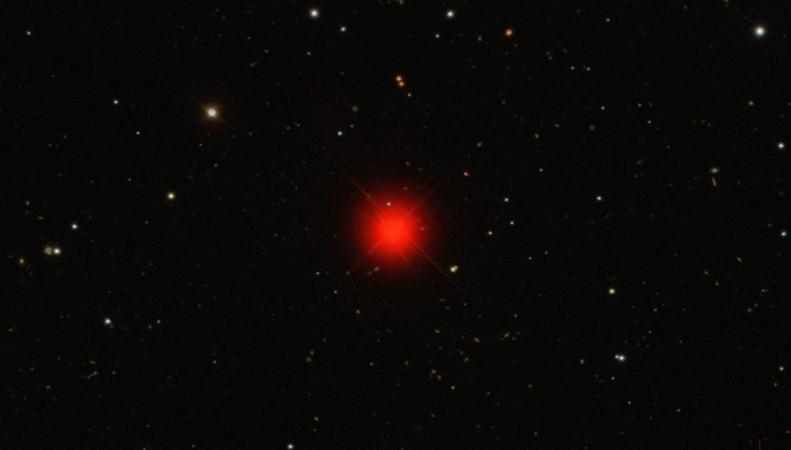
Strange radio signals were recently discovered by astronomers from nearby red dwarf star Ross 128. This information about the mysterious signals was revealed to an alien-hunting authority called Search for Extraterrestrial Intelligence (SETI) for further revelations.
ALSO READ: Huge 'alien footprints' found in Indian village spark fear among residents [VIDEO]
Here are the top seven things to know about the star:
- Located at a distance of 11 light years from Earth, the star is 2,800 times less radiant than the Sun.
- This star was observed for 10 minutes by astronomers using a massive radio telescope in a sink hole in Puerto Rico -- Arecibo Observatory, revealed Abel Mendez, an astrobiologist from the University of Puerto Rico.
- The researchers found the presence of no other celestial body near the star and estimated that these signals were emitted by extraterrestrial life forms.
- The signals given away by this red dwarf star haven't been received by satellites before, Mendez revealed.
- Mendez then elucidated in a blog spot: "Two weeks after these observations, we realised that there were some very peculiar signals in the 10-minute dynamic spectrum that we obtained from (the star) Ross 128." "The signals consisted of broadband quasi-periodic non-polarized pulses with very strong dispersion-like features. We believe that the signals are not local radio frequency interferences (RFI) since they are unique to Ross 128 and observations of other stars immediately before and after did not show anything similar," he was quoted as saying by bgr.com.
- The researchers came up with various other reasons that could be responsible for these strange alien emissions like:
- The red dwarf star was emitting the signals itself.
- A nearby object present near the star could be the source of the signals.
- An orbiting object could have produced these signals.
7. "The recurrent alien hypothesis is at the bottom of many other better explanations," Mendez says.
The group hopes to gather additional data by the end of the week for finding out a better cause behind these weird signals.














